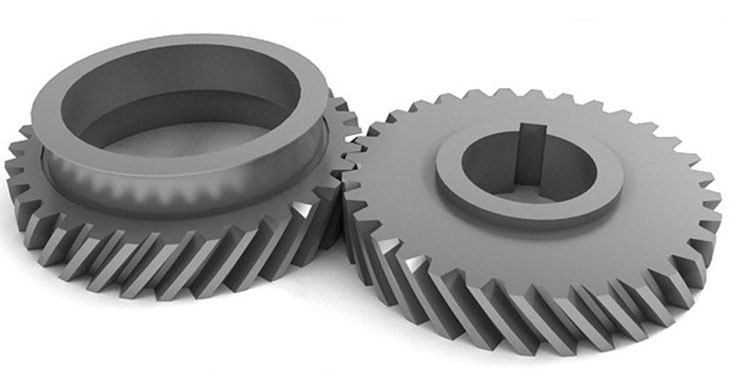Helical gear failure analysis is crucial for identifying the root causes of gear failures and implementing effective solutions to prevent future issues. Here are some common causes of helical gear failures and their corresponding solutions:

1. Wear and Abrasion:
Cause: Wear and abrasion occur due to repeated sliding contact between gear teeth, leading to material loss and tooth profile changes.
Solution: Ensure proper lubrication with high-quality lubricants to minimize friction and wear. Use materials with excellent wear resistance and hardness. Periodically inspect gears for signs of wear and replace them if necessary.
2. Tooth Pitting and Fatigue:
Cause: Repeated cyclic loading can cause stress concentrations and lead to tooth pitting and fatigue failure.
Solution: Design gears with appropriate safety margins, using materials with high fatigue resistance. Optimize gear profiles to reduce stress concentrations and avoid excessive loads.
3. Bending and Contact Stress:
Cause: Overloading or improper alignment can cause excessive bending and contact stresses, leading to gear tooth breakage.
Solution: Ensure proper gear alignment and avoid overloading the gears. Use finite element analysis (FEA) to assess stress distribution and optimize gear design for uniform load distribution.
4. Tooth Root Fillet Failure:
Cause: Inadequate fillet radii can result in high stress concentrations at the tooth root, leading to premature failure.
Solution: Optimize gear design with appropriate fillet radii to reduce stress concentrations and increase tooth root strength.
5. Tooth Shear:
Cause: High loads and improper gear engagement can cause tooth shear and result in tooth breakage.
Solution: Ensure proper gear meshing and avoid sudden overloads. Optimize gear design to distribute loads evenly across the tooth width.
6. Galling and Scuffing:
Cause: Insufficient lubrication or the use of improper lubricants can lead to galling and scuffing of gear teeth.
Solution: Choose the right lubricant with suitable additives to prevent galling and scuffing. Ensure proper lubrication intervals and monitor lubricant condition regularly.
7. Misalignment:
Cause: Improper alignment between gear shafts can cause excessive loads on gear teeth and lead to failure.
Solution: Align gears accurately during installation and perform regular alignment checks. Correct any misalignment promptly to avoid premature gear failure.
8. Thermal Overload:
Cause: Excessive operating temperatures due to inadequate cooling or overload can lead to gear failure.
Solution: Ensure proper cooling and ventilation in the gear system. Avoid overloading gears and monitor operating temperatures regularly.
9. Corrosion and Contamination:
Cause: Corrosion and contamination can result from improper storage or exposure to harsh environments.
Solution: Protect gears from corrosive environments, and use suitable materials and coatings to resist corrosion. Keep gears clean and free from contaminants.
10. Material Defects:
Cause: Poor-quality materials or manufacturing defects can lead to gear failures.
Solution: Use high-quality materials from reputable suppliers and implement rigorous quality control during gear manufacturing.
11. Dynamic Load Fluctuations:
Cause: Rapid changes in loads during operation can cause dynamic load fluctuations and lead to gear failures.
Solution: Design gears with appropriate safety factors to handle dynamic loads. Optimize gear profiles to minimize impact forces during gear meshing.
Performing a thorough failure analysis and implementing corrective actions based on the identified causes are essential for preventing gear failures and ensuring reliable and efficient gear performance. Regular maintenance, proper gear design, and adherence to best practices in gear manufacturing and operation contribute to extending the life of helical gears and preventing costly downtime.
